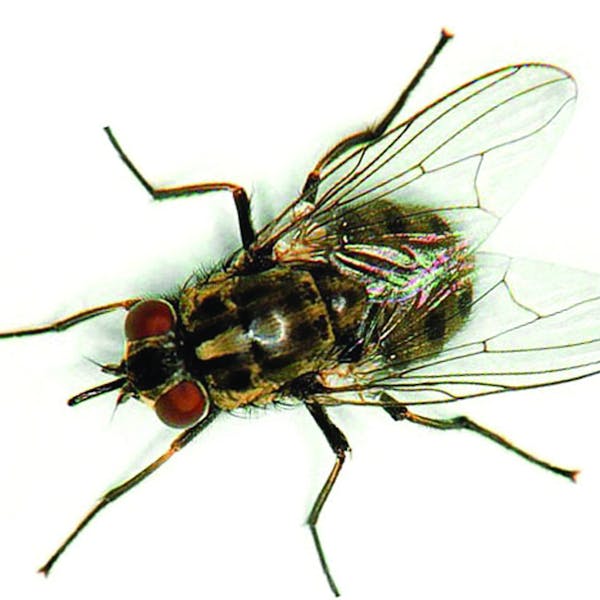The BP Deepwater Horizon oil spill struck at the very heart of fish, a new study says. Exposed to millions of gallons of crude, young tuna and amberjack, some of the speediest predators in the ocean, developed heart defects that are likely to limit their ability to catch food.
The findings of the study, led by the National Oceanic and Atmospheric Administration, have grim implications for the future of yellowfin and bluefin tuna, as well as amberjack, that were embryos, larvae or juveniles when the spill occurred during tuna-spawning season in the northern Gulf of Mexico in April 2010.
Embryos are highly sensitive, so fragile that it is possible to see through them. When scientists re-created the conditions of the spill in a lab, exposing tuna and amberjack in the developmental stage to an oil slick, they observed "a slowing of their heartbeats," said Barbara Block, a biology professor at Stanford University who co-authored the study.
"They're not going to be able to survive" as they develop into adult fish, said Nat Scholz, leader of the ecotoxicology program at NOAA's Northwest Fisheries Science Center in Seattle. "You're going to be losing those fish from the adult spawning population."
The study — "Deepwater Horizon crude oil impacts the developing hearts of large predatory pelagic fish" — was published Monday in the Proceedings of the National Academy of Sciences on the 25th anniversary of the Exxon Valdez oil spill in Alaska's Prince William Sound.
Research conducted on fish after the 1989 Exxon Valdez spill had similar findings, but the exposed population then was smaller because the 11-million-gallon spill collected closer to the shore, killing an estimated 250,000 birds.
NOAA's study comes as BP has regained the ability to bid on federal oil and gas leases; the Environmental Protection Agency recently lifted a ban on the company. The oil giant filed a lawsuit in a Texas court in August, arguing that it had been sufficiently punished for the spill.
The study is part of the Deepwater Horizon Natural Resource Damage Assessment, which seeks to determine the impact of the disaster and assess the price of restoring the gulf after the largest accidental marine oil spill in history.
The other authors were John Incardona, a research toxicologist at NOAA's Northwest Fisheries Science Center, and Martin Grosell, a biology professor at the University of Miami's Rosenstiel School of Marine and Atmospheric Science.
The northern gulf is a critical spawning area for a wide variety of warm-water pelagic fish, including mahi-mahi, swordfish, blue marlin, sailfish, cobia, and king and Spanish mackerel. Pelagic fish are those that swim at mid-depth, neither at the surface nor at the ocean bottom.
Pelagic fish produce small, buoyant embryos that develop quickly but are extremely delicate. During the study, they were exposed to two oil samples collected from surface-skimming operations in the open Gulf of Mexico and from the source pipe attached to the damaged Deepwater Horizon wellhead.
In the three species studied, abnormalities were clear. Heart contractions were observed and asymmetry was apparent. The deformities continued after the eggs hatched.
"Morphological abnormalities included … reduction in the outgrowth of the finfolds or finfold blisters, a dorsal or upward curvature of the body axis, and marked reduction in the growth of the eye," the study said.
Biologists still do not know how many fish were killed or mortally damaged.
Tuna take eight years to mature, the point at which they can be commercially caught. Only four years have passed since the spill, so fish that were embryos, larvae or juveniles at the time of the spill have not reached adulthood and cannot be caught. Because the fish at this stage are rarely seen, their mortality cannot be reflected by fishing totals or other surveys.
But the study is important because it demonstrates oil's impact on fish hearts and could explain a future die-off of tuna.
"Now you've got two studies: one that shows how … chemicals in petroleum affect cells and an organism study where you can see the slowing of the heart," said Block.
"We now have a better understanding of why crude oil is toxic, and it doesn't bode well for the bluefin or yellowfin embryos floating in oiled habitats," Block said.
Environmental groups welcomed the study. "This study, and others like it, helps us to see what can't be seen with the naked eye," said Jacqueline Savitz, vice president at the nonprofit group Oceana.
"For a species like bluefin tuna, whose populations have crashed due to overfishing and are fighting to rebuild their former abundance," she said, "BP's oil was a shot to the heart."
